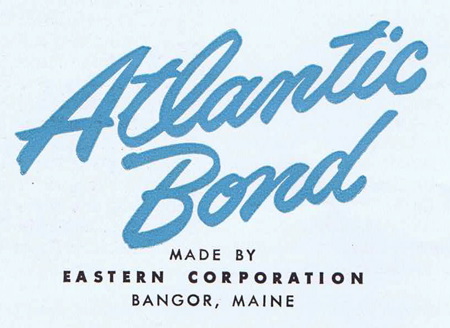Scanning Around With Gene: Animals in Advertising
Animals have long been a regular theme in advertising, especially when anthropomorphized. Except for obvious ties to products like dog food and pet products, animals usually have nothing to do with the goods or services advertised, but we connect with them and the products nonetheless, and we get a good feeling when a company is associated with cute animals.
I often wonder what the meetings at an ad agency are like when the topic of animals comes up. It must be hard to think of anything new to do with them, although special effects have allowed us to make animals seem to talk, dance, and do other human-like things. And we always seem to fall for animals (or talking babies) with an irreverent or comical persona.
So I wasn’t surprised to find a great series of print ads featuring animals from the Eastern Corporation, a paper maker in Bangor, Maine, for its line of Atlantic bond printing paper. They all appeared in a series from 1946 that ran in American Printer magazine. Click on any image for a larger version.


The company managed to vaguely connect the animals to the product through small poems that appeared with each illustration, which then tied in loosely to the ad copy. But like many paper company ads, the main point was to simply show off the paper and the printing quality you could achieve with it.


Paper company ads are somewhat unique in that regard and have often showcased interesting art for the sake of art. I mean, what can you really show about a paper product other than the paper itself? So most paper ads are inserts, printed on the actual stock.
The Eastern Manufacturing Company opened a pulp and paper mill in South Brewer, Maine, in 1889 and soon became the city’s largest employer. The plant began as a sawmill with the intention of making paper from leftover lumber and scraps.


Eastern soon specialized in fine-grade paper and Atlantic Bond became its trademark line. The mill closed in 2004.



One interesting note on Eastern is that the company had a standing offer to pay $5 to any boy who could climb all the stairs leading to the top of a 173-foot chimney at the plant. Turns out the first successful climber was a 17-year-old girl, Dione Polliot, who received $10 for her triumph in 1900, and a story in the New York Times.



Paper companies still advertise, and their promotions are some of the most interesting design projects in the market. Have you seen any recent examples of animal art from paper companies?
Follow Gene on Twitter.


At least the animals are drawings…you didn’t have to worry about them running about the studio! Charming drawings – could have also been used as a children’s picture book.
Sheila J
I totally understand why these are here, but I think that the one about the ducks should have been left out. Regardless of the fact that these are old, it is never a good idea to suggest the killing of innocent animals as cute or desirable. I find it offensive.
Interesting that they thought the Mink would be happy to die to make a fur coat.
I love the drawings but I agree with the comments about the ducks and minks. These rhymes were probably considered cute in their day. It shows how attitudes about animal welfare have changed.
Domtar had a campaign a few years ago (and maybe they still do it) that featured a husky dog, a cougar, and a lynx (which are the names of their paper products). One part of the campaign was touting each paper’s brightness and each of those animals had on sunglasses. The cougar was especially “smooth” in his 80s reflective specs. I always loved getting Domtar’s samples and postcards in the mail.
…three of the five comments are upset or uneasy with the examples Gene chose that depict the possible death of imaginary animals? Examples that were created in an advertising campaign more than 3/4 of a century ago?
I often thank Gene in the comment section for bringing back fond memories of the past while offering beautiful examples of print and design work, but the above comments demonstrate a more unfortunate reminder: Too many people find it acceptable to rewrite history.
Those who prefer to turn a blind eye to the past, exorcizing anything that might awaken their personal demons, have little hope for the future.
Thanks again, Gene… this time you imparted a lesson I doubt you intended.
– – – – – – – – – – – – – – – – – – –
Sanity is a relative concept.
If you don’t believe me,
let me introduce my relatives.
– – – – – – – – – – – – – – – – – – –